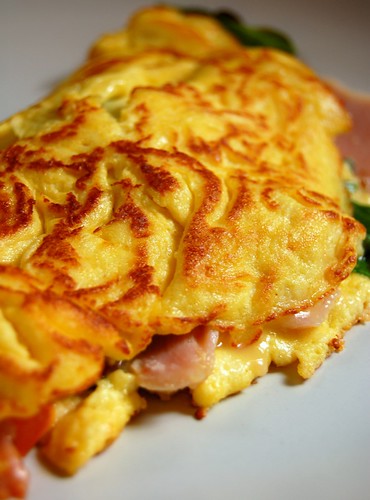
Our CSA box contained red beets both this week and last: this week they came with the leaves attached, and those are very tasty (see last recipe below "Eggs in a Nest").
It's been a while since I've cooked with beets -- I'd forgotten how much I like them, and was pleasantly surprised that the Prof likes them too (still working on the kids-- they're suspicious of food that's this RED).
Borscht is not in my culinary background, but I did grow up eating cold "Rote Beete" picked beet salads. Here's the recipe from the
GlacierValley CSA website, very similar to what I ate -- can be served hot or cold.
beet salad with horseradish dressing
You will LOVE this recipe, even if you’re a beet skeptic. It uses the beets, stems, and leaves—and the red wine vinegar and the sharp horseradish contrast really well with the sweet, earthy taste of beets. This recipe is adapted from one in Madhur Jaffrey’s World Vegetarian .
.
1 bunch beets, washed
the beet greens and stems
--------------------------
1 teaspoon olive oil
2 teaspoons red wine vinegar
2 teaspoons prepared horseradish
¼ teaspoon sea salt or kosher salt, or to taste
1 garlic clove, finely minced
1. Put whole, unpeeled beets in a baking dish or dutch oven and put ¼” of water in the dish. Cover tightly with foil or the lid of the dutch oven and bake them until tender when stabbed with a paring knife. Usually they take 40 minutes or longer, but young beets might be quicker, depending on their size. Remove from the oven and let them cool.
(Note-- Germans jus t boil them on the stove in a pot of water, and test whether it's done with a knitting needle --I'm not making this up!)
t boil them on the stove in a pot of water, and test whether it's done with a knitting needle --I'm not making this up!)2. While the beets are roasting and then cooling, wash the greens and cut the stems off the greens. Chop the stems into ½” pieces. Steam the chopped stems in a steamer until they are tender. Remove them from the steamer and then steam the greens until tender. Drain the greens and chop them up a bit.
3. When the beets are cool enough to handle, slip their skins off. Cut in halves lengthwise and then crosswise into ¼”-thick slices, or in wedges—as you prefer. Put them in a bowl with the greens and stems.
4. Mix up the remaining ingredients, pour the dressing over the beets and greens, and toss. Adjust the seasonings with more vinegar, salt, and/or horseradish. Serve warm or at room temperature.
I dug out my German recipe book, and here are some more things you can do with beets, and they are a bit richer!
Hot Beet Puree in Horseradish Cream(from
The German Cookbook by Mimi Sheraton)
2 pounds beets, boiled until tender, peeled and pureed
5 slices bacon (Canadian or other)
2-3 T freshly grated horseradish (or 1T prepared)
1/2 c sweet cream (use sourcream if you're using prepared horseradish)
Fry the bacon until crisp, add beet puree, horseradish & cream. Serve hot.
Raw Beet Salad(from
The German Cookbook by Mimi Sheraton)
6 medium sized beets
2-3 T vinegar (or lemon juice)
4-6 T sour cream or yoghurt
1 T finely minced onion
salt/ sugar to taste
2 t caraway seeds (chopped or crushed)
optional green herbs
Wash beets, peel and wash again. Grate beets and add marinade. Let sit for 2 hours before serving.
Last, but not least, here's a
great recipe for the leaves, which you can use for just about any dark leafy greens (even the kids loved it, and that's saying something!). Our box also contained bok choy, so I put some in with the beet greens and spinach -- can use any combination of greens that appeals, even wild greens in spring.
Note: Leafy greens are extremely good for us: high in Omega 3's, anti-oxidants, iron, etc. -- but don't tell the kids!
Eggs in a Nest(adapted from
Animal, Vegetable, Miracle by Barbara Kingsolver)
1 onion, chopped
garlic, chopped (optional)
olive oil
several carrots, chopped
dried tomatoes (optional)
1 really large bunch of dark leafy greens (chard, beet greens, spinach, etc)
4 eggs
Saute onions & garlic in olive oil. Add carrots, tomatoes w/ a little water as needed. Cover with lid and le

t carrots get soft. Add the greens, cover until wilted. Make indentations w/ back of a spoon. Crack eggs and place into dents. Cover w/ lid, and poach for 3-5 minutes. Serve over rice or toast.
Quick, easy & yumm!







